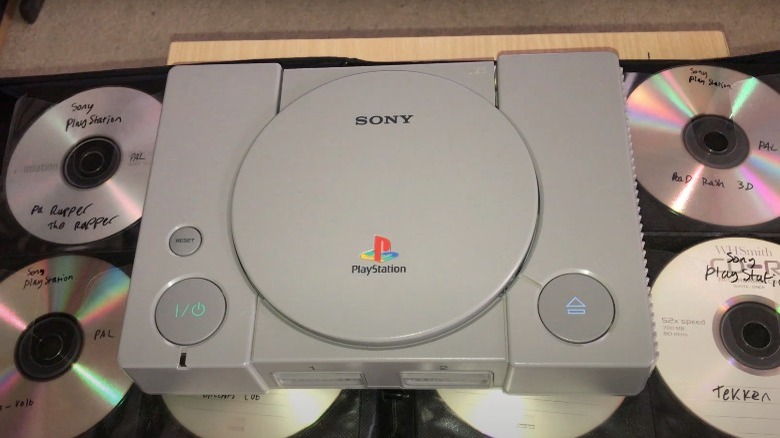What Was The Purpose Of PlayStation 1's Black Discs?
Gamers from the '90s remember the original Sony PlayStation as one of the first consoles to adopt disks as the primary medium for its games. Cartridges had been the norm up until that point, and although CD-ROMs were more fragile and easily damaged, they were also cheaper to manufacture and could store massive amounts of data. This allowed for bigger and more graphically intensive games to be developed. While N64 cartridges could only house up to 64MB of information, PlayStation CD-ROMs could store up to 660MB. Not only that, but larger titles, such as "Final Fantasy 7," could easily be split across multiple disks, exponentially increasing the amount of volume available.
One curious thing that many people might have noticed about games made for the original Playstation is that the data side of the disks is black. This unique design feature has prompted questions from gamers and collectors for years. It would be easy to think that this was simply an aesthetic decision in order to make the disks look more modern or gamer-oriented. That might have been a contributing factor, but it's more likely that Sony actually had a very particular reason for trading in the traditional mirrored surfacing for brooding inky-black. Basically, it all comes down to trying to stop piracy.
Black disks were unique
Video game companies never really had to worry much about people pirating cartridge games. The cartridges and the ability to code games into them both required special equipment that was not readily available to the average consumer. CDs, on the other hand, were everywhere and it was relatively easy for bootleggers to produce cheap copies.
A video posted by the PlayStation Museum YouTube channel shows a tour of a Sony disk manufacturing facility in Springfield Oregon and walked through the entire process of creating the disks. "Black ink is added to the plastic to give the CD its distinctive, cool, PlayStation only look," the video stated. "This also helps protect the CD from illegal copying."
It quickly became apparent that the coating didn't stop people from actually making copies, however, as there are several reports of bootleggers successfully replicating the games in spite of the coating. It's possible that the black ink may have made this process more difficult, but it seems more likely that Sony's mentality behind the coating was that it would make it obvious which disks were official PlayStation games and which ones were not. Even this safety net didn't seem to last long, however, as black-coated blank CDs quickly came available for sale as well.


